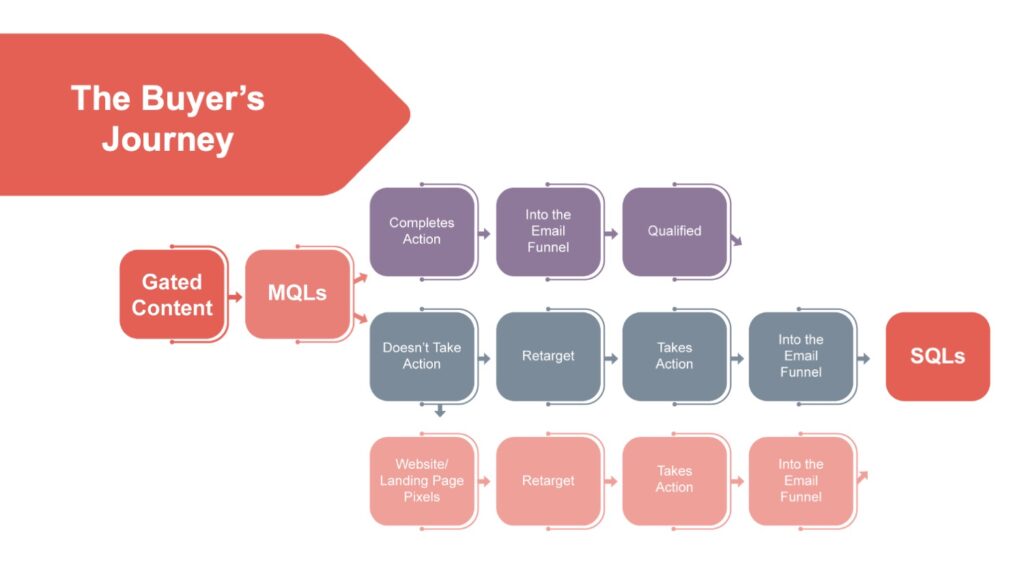The digital marketing landscape has undergone significant changes over the past few years, particularly with the onset of the COVID-19 pandemic and the subsequent economic fallout. As a result, buyers are becoming more hesitant to spend, sales cycles are longer, and it’s even more challenging to break through the clutter and reach potential customers. Now more than ever, it’s crucial for digital marketers to understand the buyer’s journey and how it has evolved.
You may have heard of the three stages of the buyer’s journey: awareness, consideration, and decision. During the awareness stage, the buyer becomes aware of a problem or need that they have. During the consideration stage, they start to evaluate potential solutions. Finally, during the decision stage, they make a purchase decision.
To effectively guide buyers through this journey, digital marketers must take a full-funnel marketing approach, utilizing a digital marketing ecosystem. This approach involves identifying where the target audience is consuming information and prioritizing the appropriate media mix. Developing key messages and supporting content to push through paid and organic media channels is essential. Moreover, setting up campaigns, tracking, and testing is crucial to ensure everything works appropriately.

One of the most important elements of the buyer’s journey is retargeting. Given that it takes multiple touchpoints before a conversion or sale, retargeting can play a significant role in supporting your overall marketing strategy. However, you must ensure that your retargeting strategy is segmented appropriately. For instance, if a potential lead has engaged with a particular piece of content, you should retarget them with additional content related to that topic rather than sending them irrelevant information.
Another critical aspect of the buyer’s journey is email marketing and lead nurturing. Once you’ve converted a lead, you must continue engaging with them through a series of follow-up emails sharing similar content. This can help keep your brand top of mind and eventually drive them towards making a purchase.
Qualifying events are triggers that qualify leads from marketing to sales (marketing-qualified leads vs. sales-qualified leads). Examples of qualifying events include lower-funnel actions such as attending a webinar, joining a free training class, or downloading a book. Setting up lead scoring and qualifying events has been a key factor in success across the board with clients.
To succeed in today’s digital marketing landscape, it’s essential to let data drive your decisions, be adaptable and quick to make shifts and optimizations, leverage best practices, and always be testing. By adopting these strategies and staying attuned to changes in the buyer’s journey, you can continue to drive leads and sales for your business.


